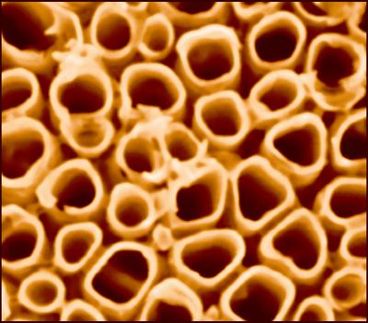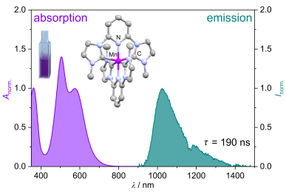Switchable Adhesive
Gel- and polymer-coated surfaces stick together and separate in response to an environmental stimulus
Advertisement
Two surfaces stick together, separate, and stick together again - on command. This discovery by a team of researchers from the Universities of Sheffield (UK) and Bayreuth contradicts our day-to-day experience. In the animal kingdom, geckos can climb up vertical inclines, displaying an incredible switchable adhesion as they do so. Insects also use another form of switchable adhesion to sit on your ceiling and then fly off before you climb up on your chair with a rolled-up newspaper. How these animals can switch off and on adhesion is not yet understood in detail. But the scientists led by Mark Geoghegan reveal the secret of their "intelligent" adhesion in the journal Angewandte Chemie.
One of the surfaces involved consists of a polyacid gel, a three-dimensionally cross-linked polymer containing many acid groups. This polymer network is so heavily soaked in liquid that it forms a solid, gelatinous mass. The second surface is a silicon chip onto which a polybase has been deposited. This polybase consists of polymer chains that stretch brush-like from the support and contain many basic groups. In water or slightly acidic solution, the acidic groups carry a positive charge while the basic groups are negatively charged; this causes them to attract each other. In addition to this electrostatic attraction, hydrogen bonds are also formed, which causes the two surfaces to be tightly stuck together.
If the surrounding solution is made more strongly acidic (a pH value of about 1), the bonds break up, the basic groups lose their charge, and the electrostatic attraction lets up. The two surfaces can then be slowly and carefully separated from each other without any damage. This detachment is reversible: If the pH value is raised again, making the solution less acidic, the gel and "brush" stick to each other once again. This cycle can be repeated many times by simply changing the pH value.
Possible applications for such "smart" surface pairs include microelectromagnetic components (actuators), components for microfluidic systems, or carriers for pharmacological agents that could release their cargo under specific physiological conditions.
Original publication: Mark Geoghegan et al.; "Controlling Network-Brush Interactions to Achieve Switchable Adhesion"; Angewandte Chemie International Edition 2007.
Most read news
Other news from the department science

Get the chemical industry in your inbox
By submitting this form you agree that LUMITOS AG will send you the newsletter(s) selected above by email. Your data will not be passed on to third parties. Your data will be stored and processed in accordance with our data protection regulations. LUMITOS may contact you by email for the purpose of advertising or market and opinion surveys. You can revoke your consent at any time without giving reasons to LUMITOS AG, Ernst-Augustin-Str. 2, 12489 Berlin, Germany or by e-mail at revoke@lumitos.com with effect for the future. In addition, each email contains a link to unsubscribe from the corresponding newsletter.































































